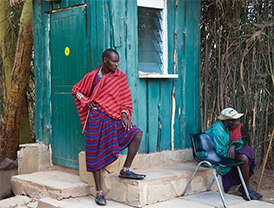
Photography was commercially introduced to the world somewhere around the year 1839 – about 178 years ago. In those days there was only black & white photography. Colour photography came about 96 years later, somewhere in 1935. Back then, during the B&W era, photographers made amazingly beautiful photos in spite of the fact that camera lenses and films were of very poor quality as compared to what was available in the later years before the onset of digital photography.
But not everyone likes to work in black and white. Ask a group of photographers whether they love colour or B&W, and you could actually start a war of words. Here’s what a few well-known names have to say:
“We don’t live in a world that’s black and white” – Shannon Elizabeth
“Kids today don’t watch a black and white movie” – Robert Englund
“To see in colour is a delight for the eye but to see in black and white is a delight for the soul” – Andri Cauldwell
“Colour is descriptive. Black and white is interpretive” – Elliott Erwitt
There will always be those for and against black and white photography. I read somewhere that more than 30 different black & white films are available worldwide. Unfortunately for most of us, especially in india, films (as well as processing chemicals) are a rare comodity today and hence it becomes even more imperative to learn how colour images can be converted to B&W.

